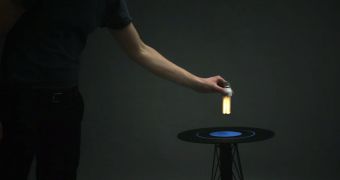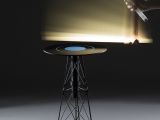Normally, to get a light bulb of any sort to light up you have to twist it into a special socket and turn on the power, but a designer invented a table that can make light turn on without having to connect any wires to the bulb itself, or any other electrical source.
The designer's name is Florian Dussopt. He is a Frenchman that took advantage of the way electromagnetic waves interact with the physical world.
The table emits an electromagnetic signal that interacts with the mercury atoms in the fluorescent light bulbs.
Thus causes them to emit ultraviolet light and, thus, glow in the dark. You won't get the same intensity as on full power, but it's still a remarkable feat.
The tablet looks like a Tesla tower too, which is kind of fitting since it does what Nikola Tesla tried to accomplish with the Wardenclyffe Tower, but on a smaller scale.
The Tesla Tower was meant to allow electricity to travel over a great distance. Clearly, there is no “great distance” here, but it's still a tribute, of sorts.
We aren't sure if this will ever lead to floating lights, or ceiling/wall-hanging light sources lacking in physical power sources.
It would definitely be useful to architects to not have to worry about integrating an electrical system in the walls, but if that ever happens it won't be in the near future.
Still, the table can be a nice quirk in a futuristic mansion's living room, even if no one's likely to take a neon tube and wave it through the air just for fun.
Chances are Dussopt won't bother pushing the table though. It's fine as a concept, but it's unlikely to see many buyers even if it does reach retail, because it negatively affects any other electronics in its vicinity.

 14 DAY TRIAL //
14 DAY TRIAL // 
